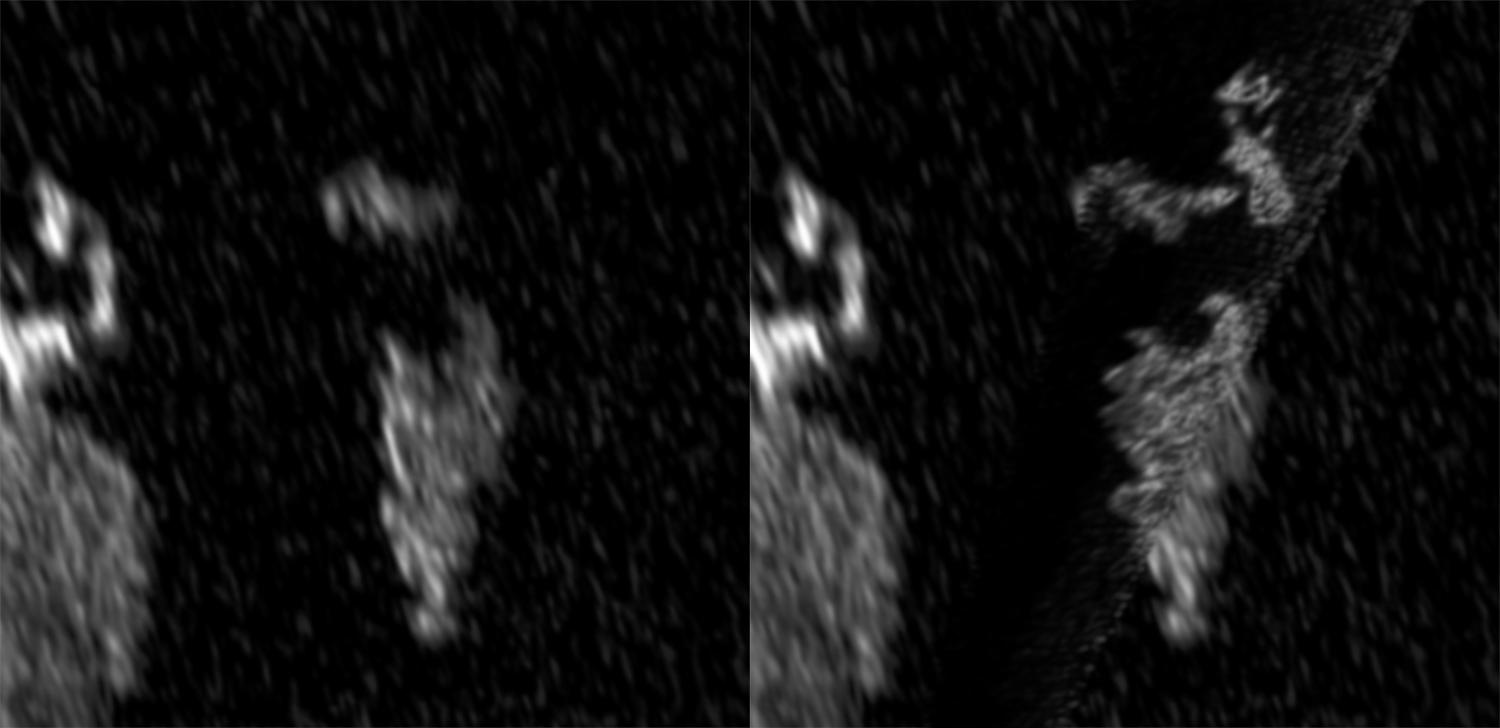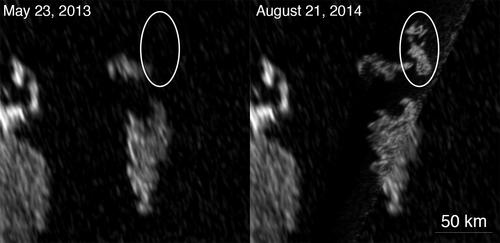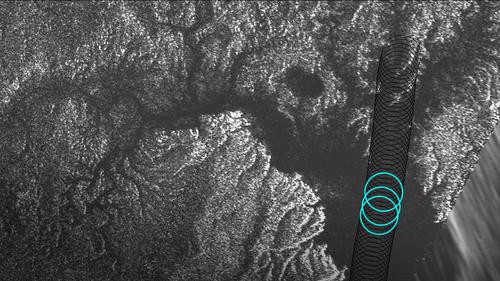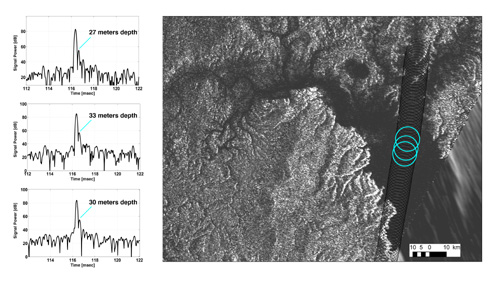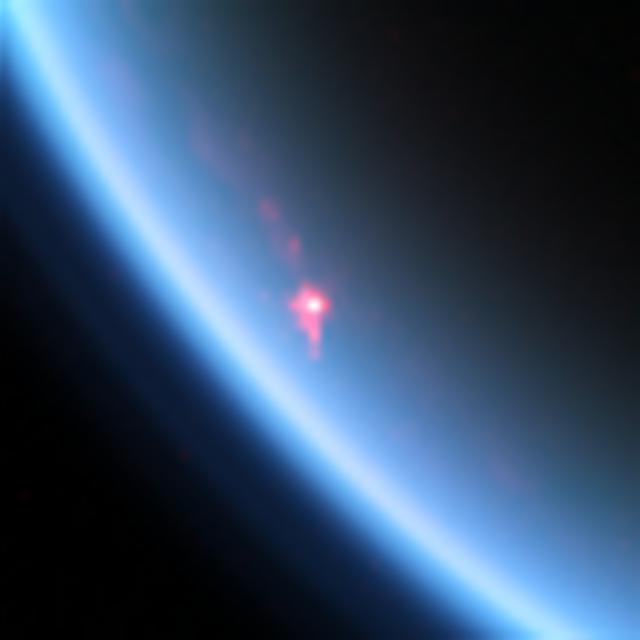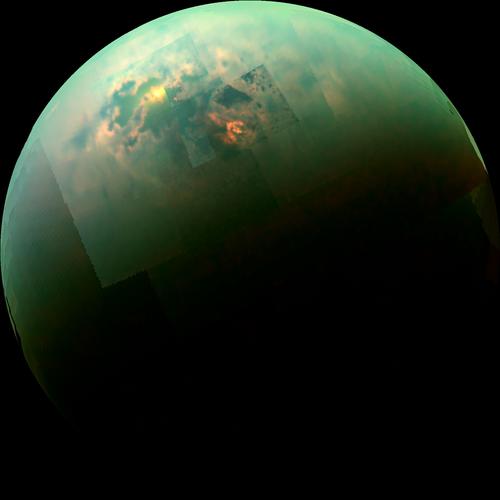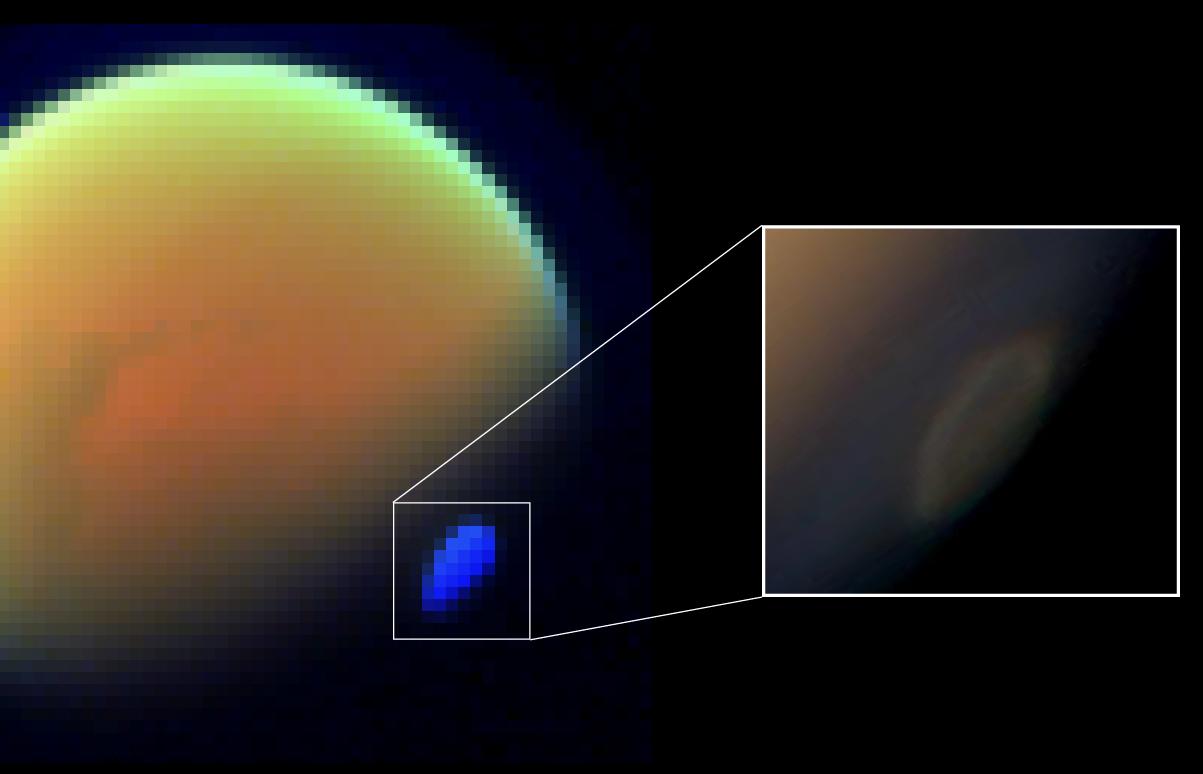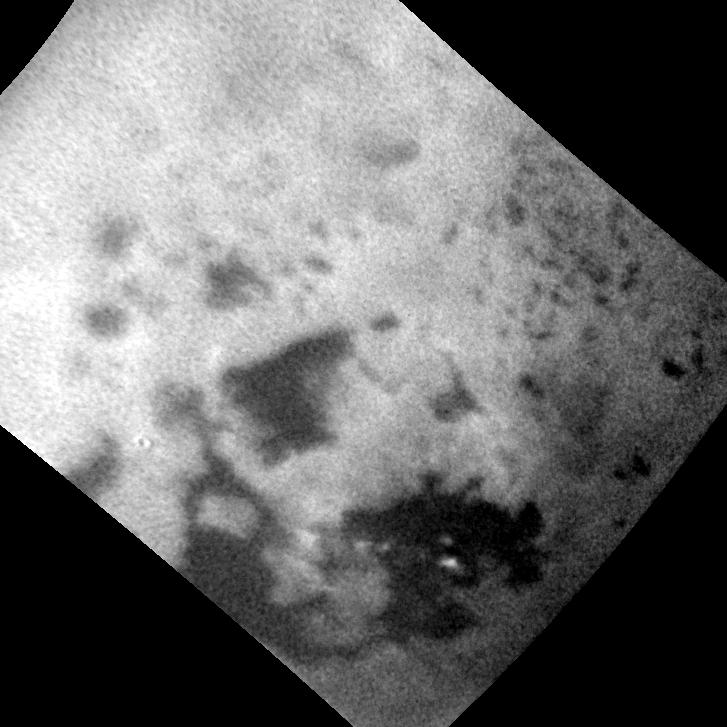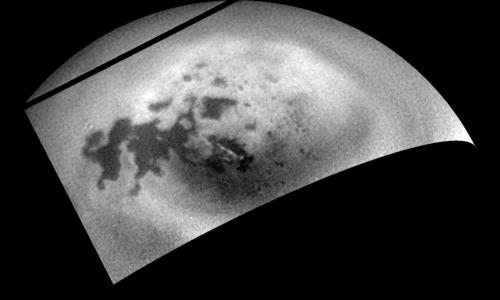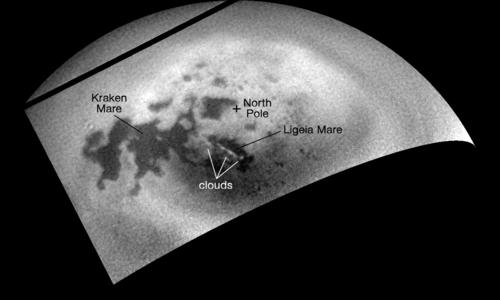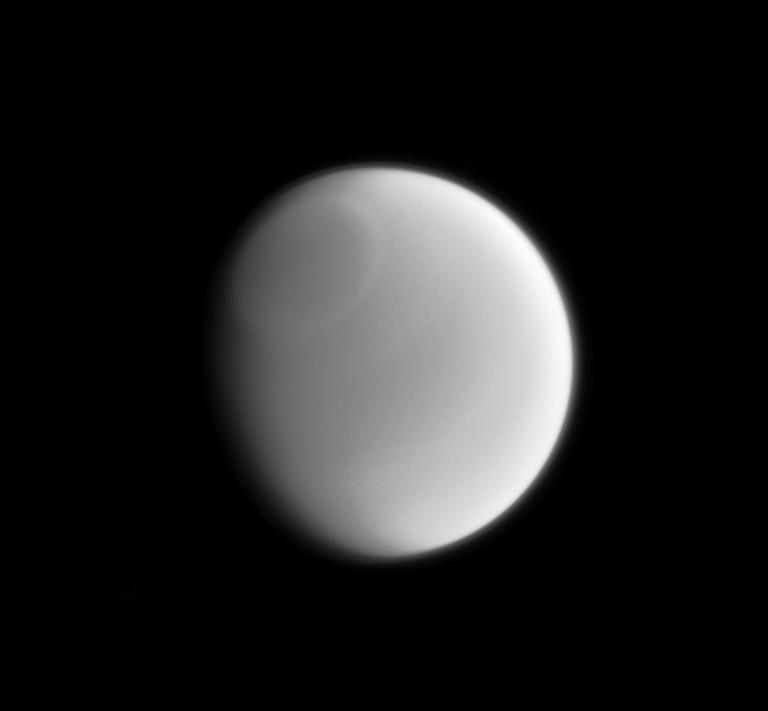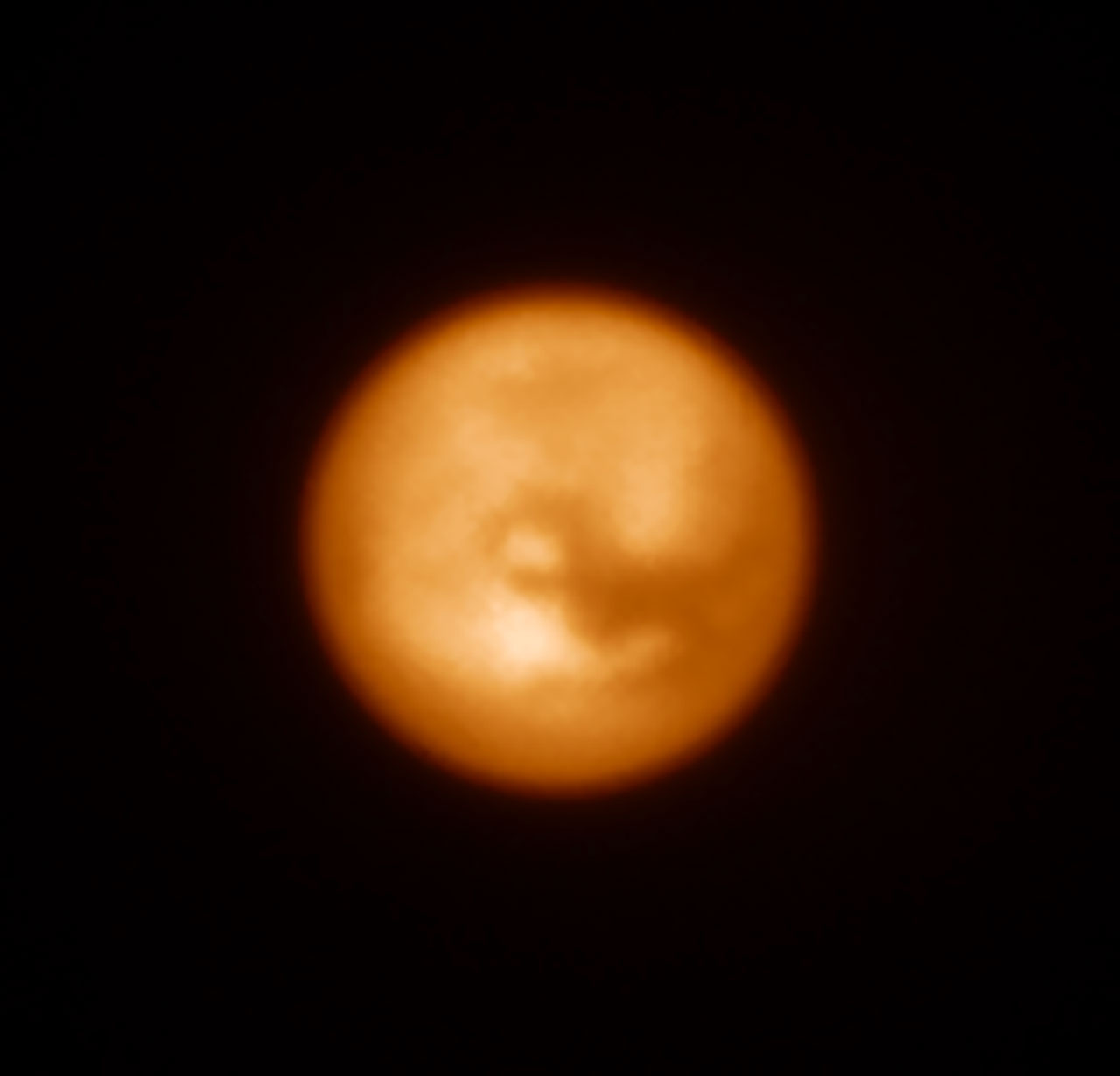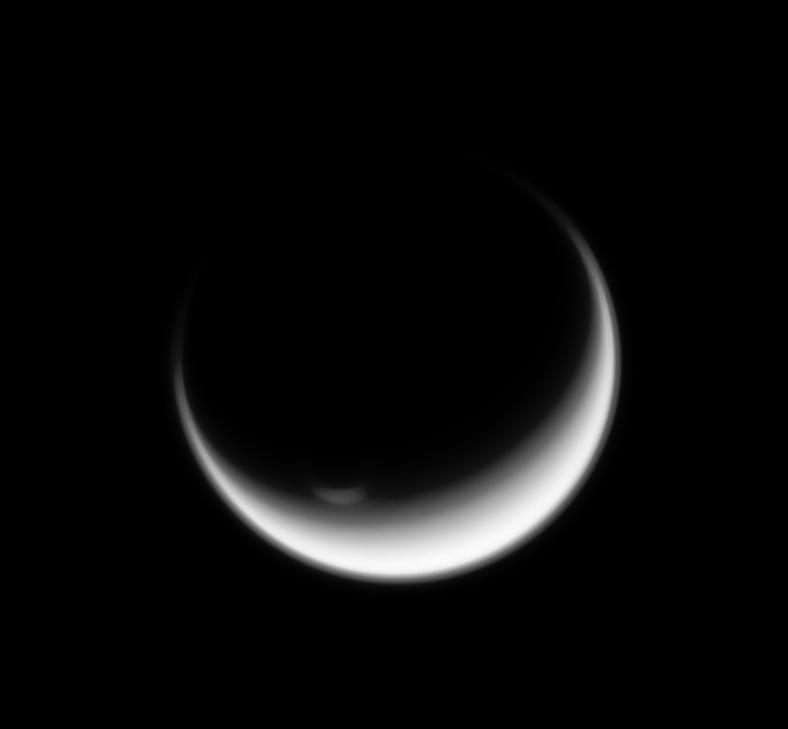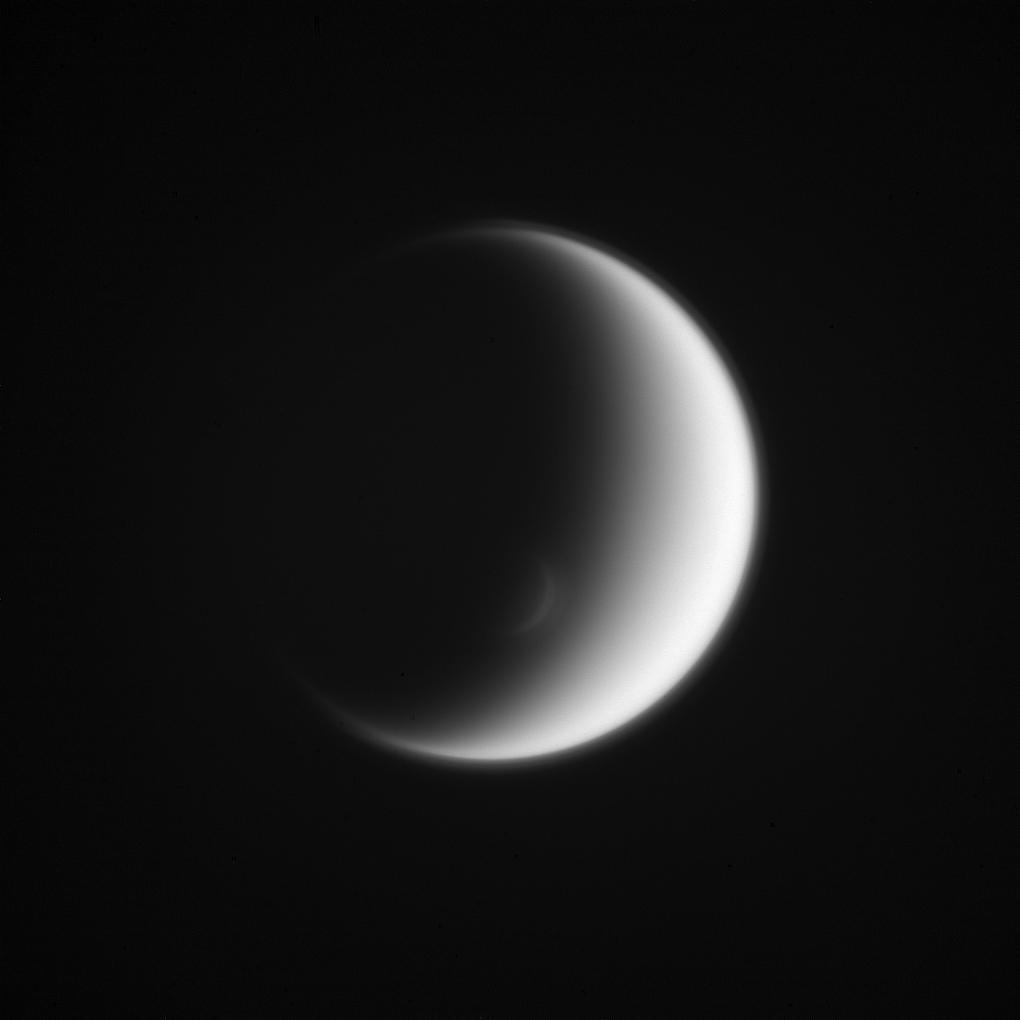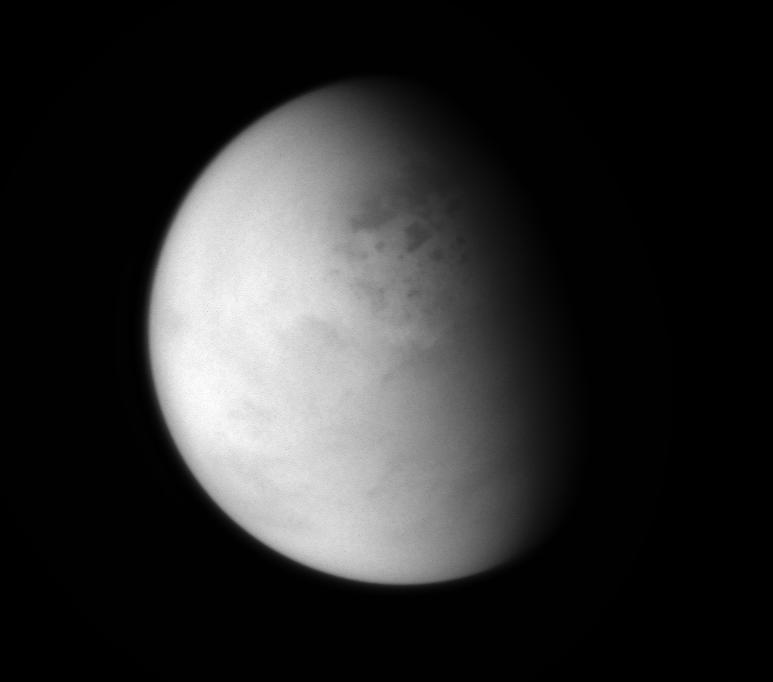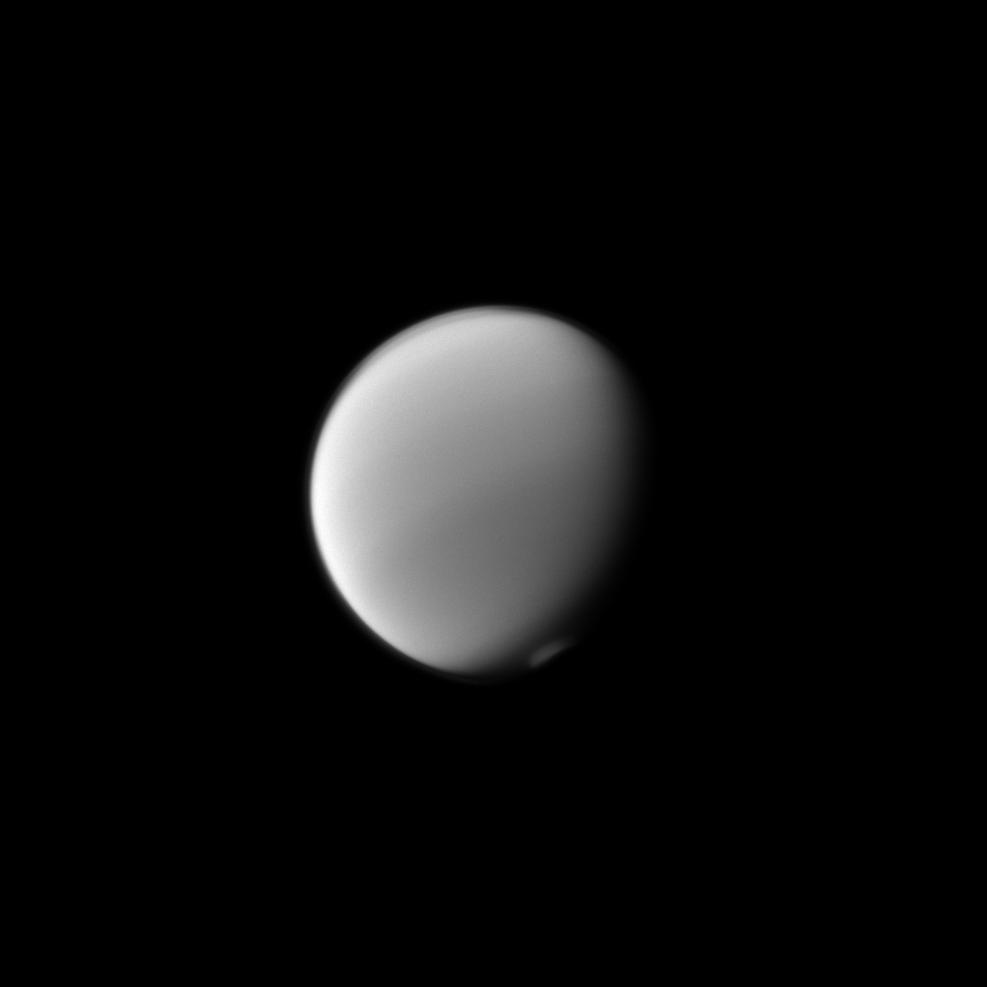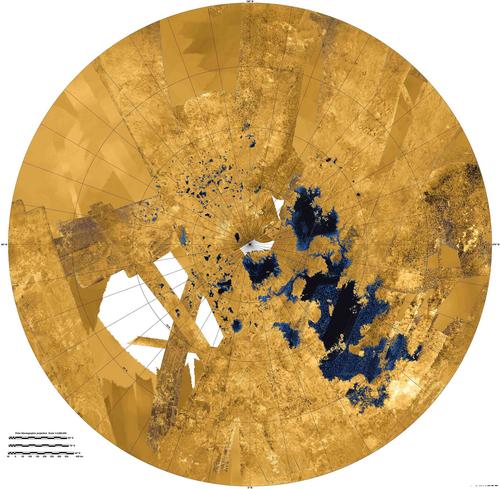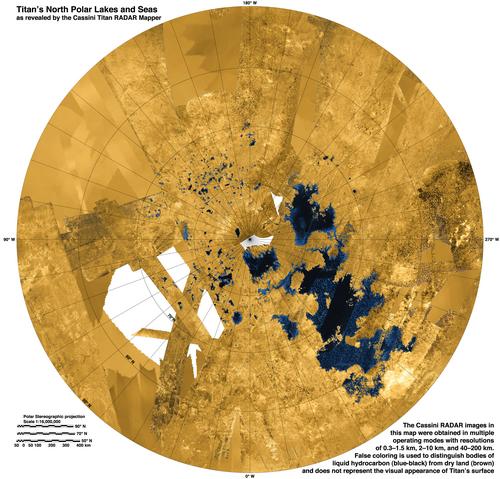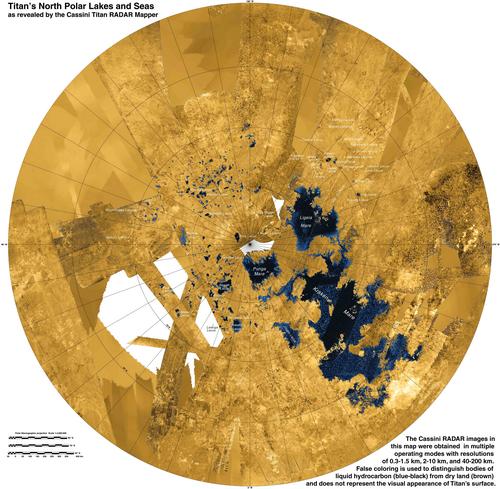| The image in the upper part of the table corresponds to a
radar mosaic of a portion of the largest Titanian sea Kraken Mare. The
left image and the right image of the mosaic show the same area taken at a
different time. The left view was obtained on May 23, 2013 with the Radar
Mapper of the Cassini probe and the right image was taken on August 21,
2014 with the same instrument. The Cassini researchers are astonished to
discover a new reflective feature in Kraken Mare in the Synthetic Aperture
Radar (SAR) image of August 2014. The bright feature, which is relatively
big, looks like a new island or archipelago. A new bright feature dubbed the "Magic Island" had already been identified in the north polar lake or sea Ligeia Mare on the basis of a comparative analysis of radar data between 2013 and 2014. The latest radar image of the intriguing bright feature seems to show that it is spreading or disintegrating. Researchers believe that the bright feature in Kraken Mare is related to something occuring on the sea's surface. The bright feature may be related to waves or floating debris. The view of May 23, 2013 was acquired from the Radar Mapper at an incidence angle of 56 degrees whereas the view of August 21, 2014 was obtained at an incidence angle of 5 degrees, the incidence angle representing the angle at which the radar signal strikes the surface. The view found in the lower part of the table shows the same region with information upon the date, the location of the new bright feature and the scale. Image Credit: NASA/JPL-Caltech/ASI/Cornell. |
